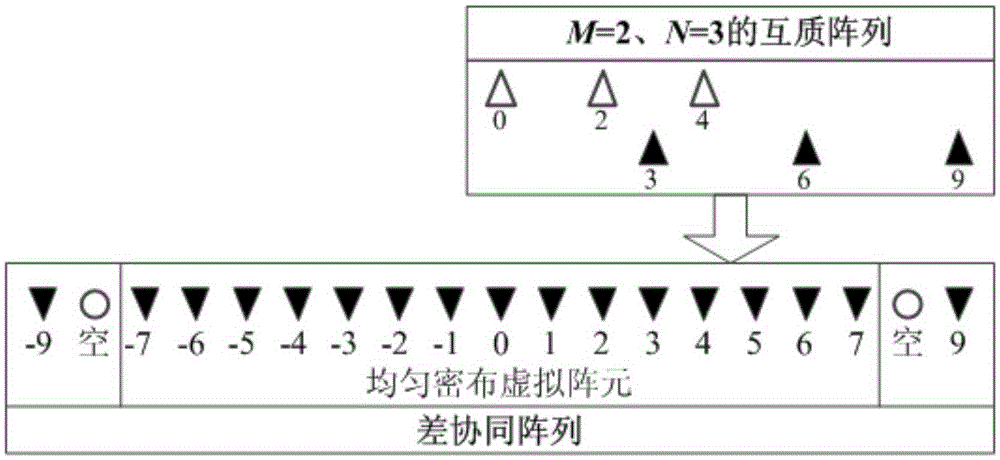Virtual wave beam forming method based on coprime arrays
A virtual beam and array technology, applied in radio wave measurement systems, instruments, etc., can solve problems such as fading, disordered output beams, and main lobe degradation
- Summary
- Abstract
- Description
- Claims
- Application Information
AI Technical Summary
Problems solved by technology
Method used
Image
Examples
Embodiment 1
[0058] Embodiment 1: see Figure 1 to Figure 12 , a virtual beamforming method based on a coprime array, comprising the following steps:
[0059] 1) Arrange multiple array elements to form a coprime array, and perform multi-snapshot sampling on the incident signals of multiple non-correlated signal sources in different spatial directions; the specific method is: arrange N+2M-1 array elements to include two A coprime array of uniform sparse subarrays, the array element position is:
[0060] x={Mnd 0 ,0≤n≤N-1}U{Nmd 0 ,1≤m≤2M-1}(1) In formula (1), d 0 is the unit interval of half wavelength, when the working frequency is f 0 time d 0 =λ / 2=c / 2f 0 ; In this embodiment, we set M=2, N=3, half-wavelength unit interval d 0 =1.
[0061] When the power is L, The L mutually uncorrelated signal sources along their respective directions θ 1 ,θ 2 ,L,θ L is incident to the coprime array, then the received signal vector at the kth snapshot sampling moment is expressed as:
[00...
PUM
 Login to View More
Login to View More Abstract
Description
Claims
Application Information
 Login to View More
Login to View More - R&D
- Intellectual Property
- Life Sciences
- Materials
- Tech Scout
- Unparalleled Data Quality
- Higher Quality Content
- 60% Fewer Hallucinations
Browse by: Latest US Patents, China's latest patents, Technical Efficacy Thesaurus, Application Domain, Technology Topic, Popular Technical Reports.
© 2025 PatSnap. All rights reserved.Legal|Privacy policy|Modern Slavery Act Transparency Statement|Sitemap|About US| Contact US: help@patsnap.com



